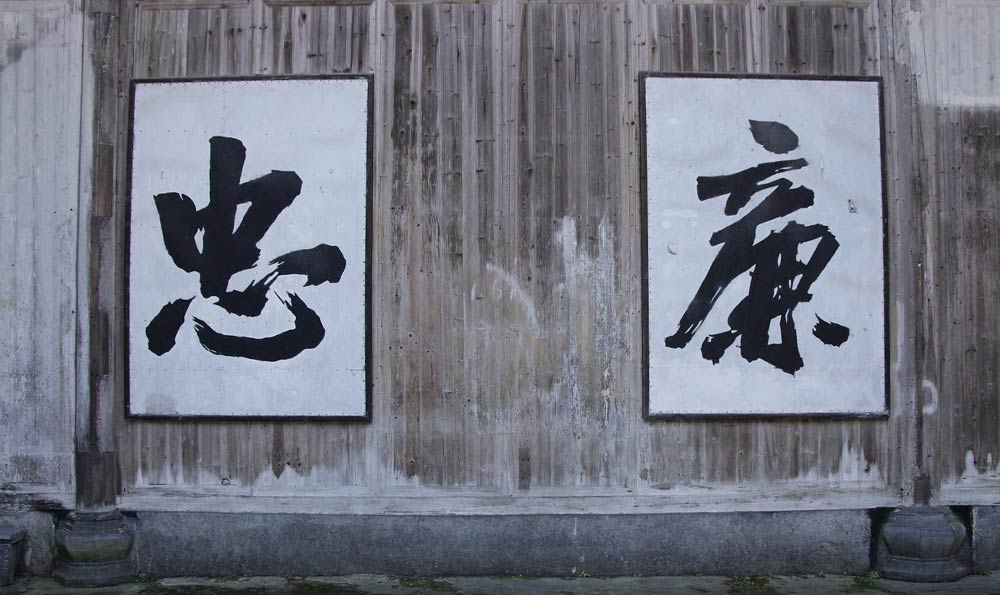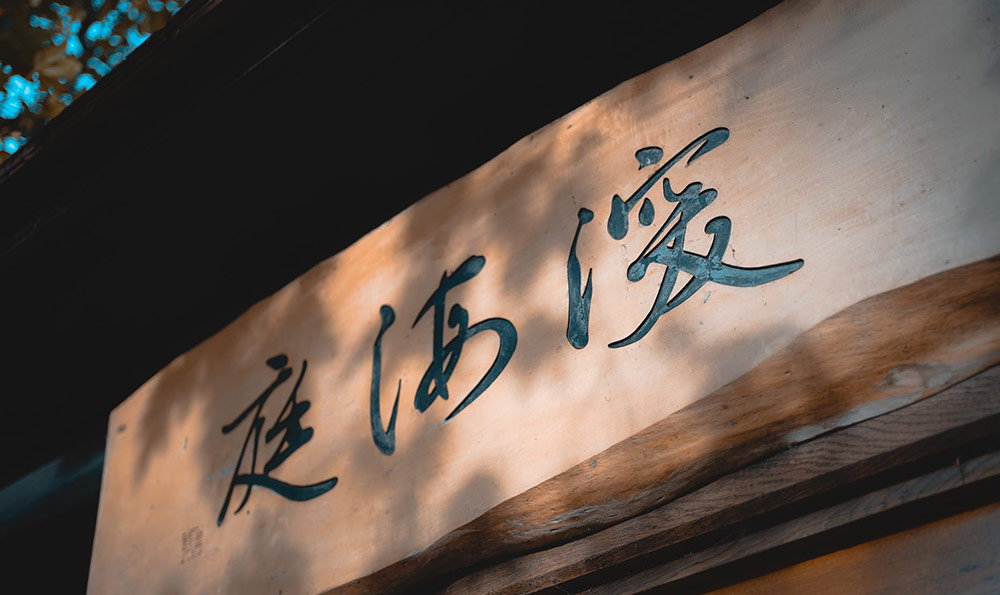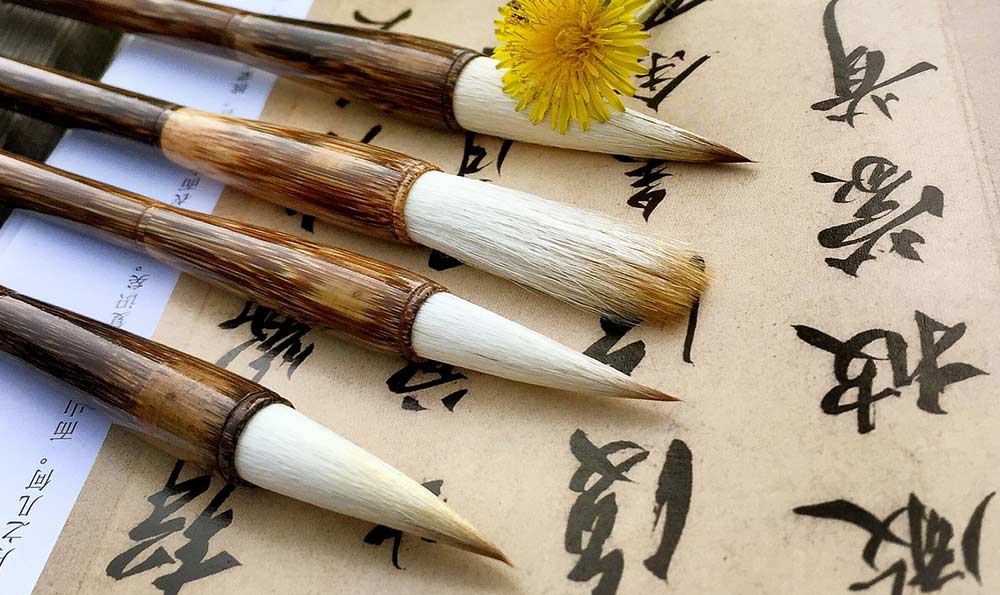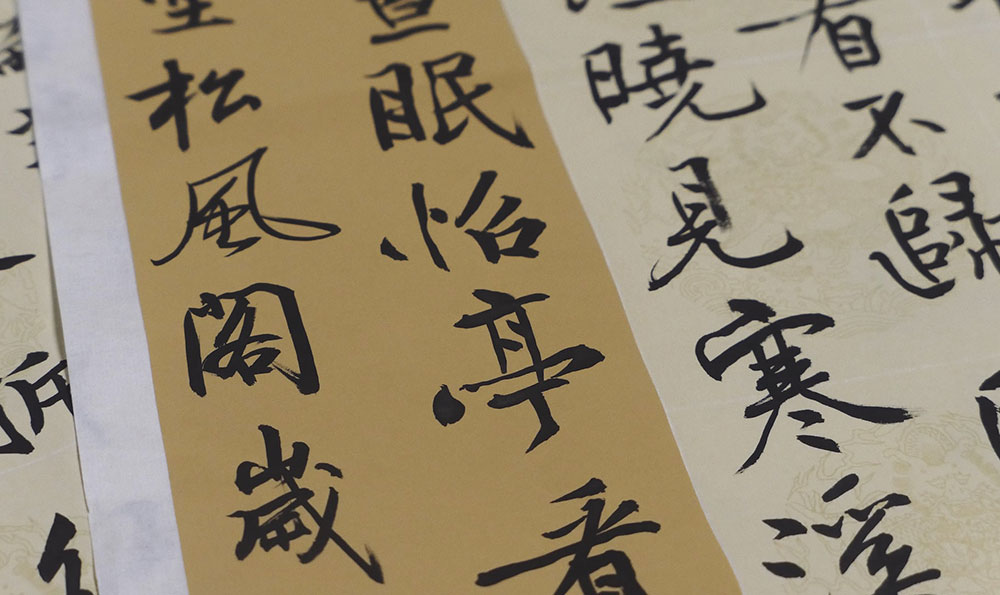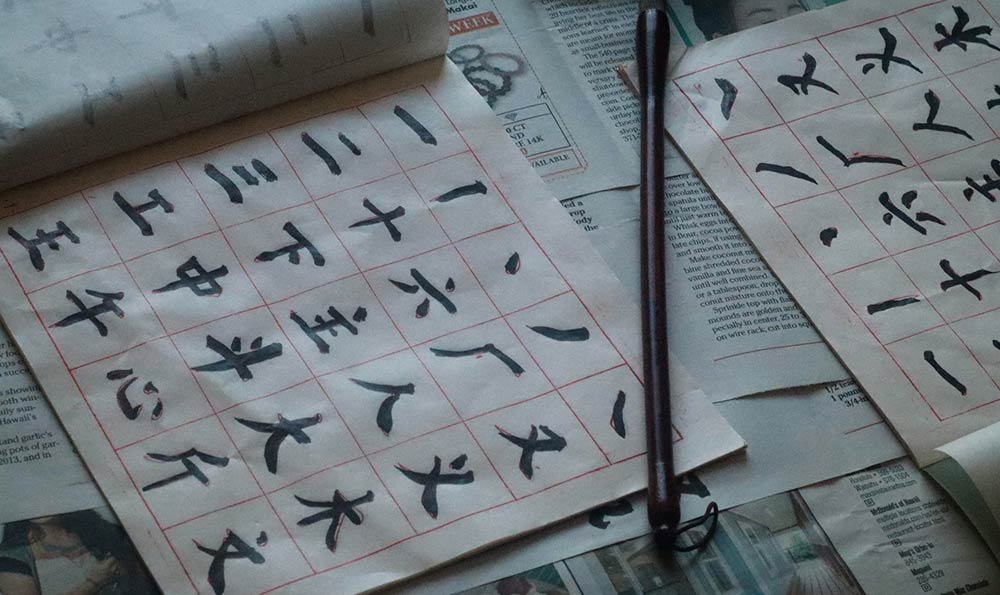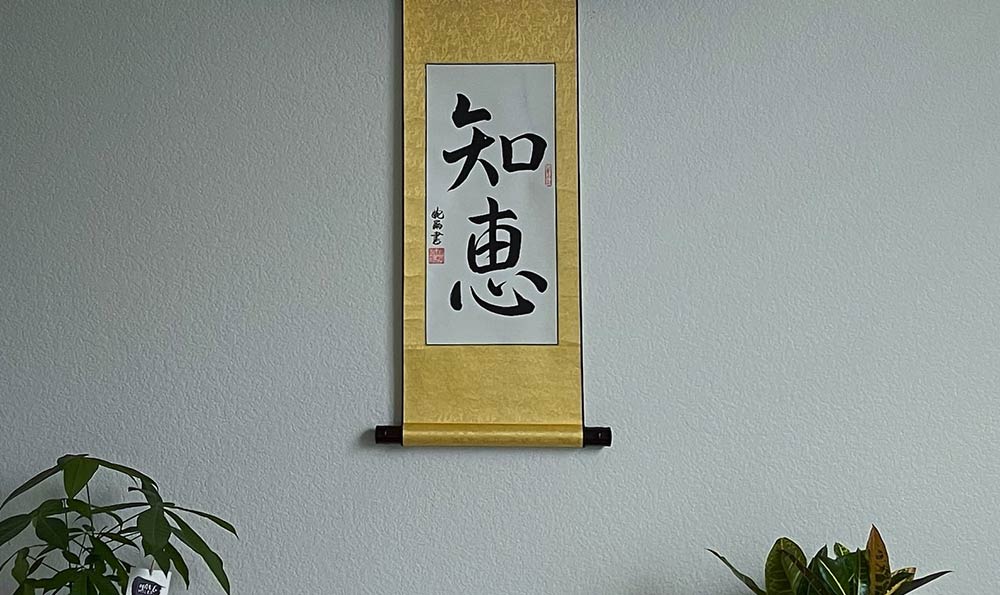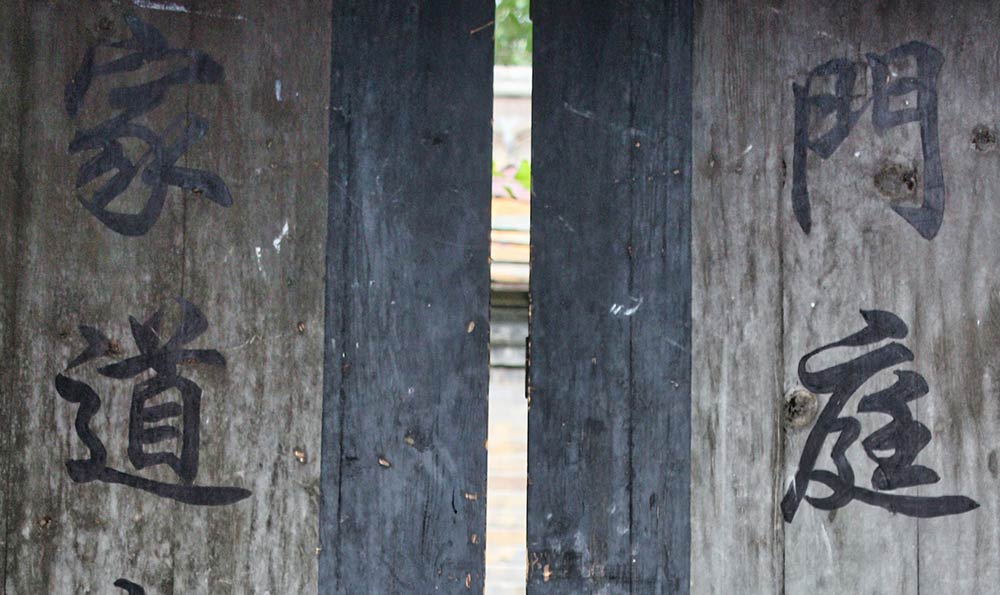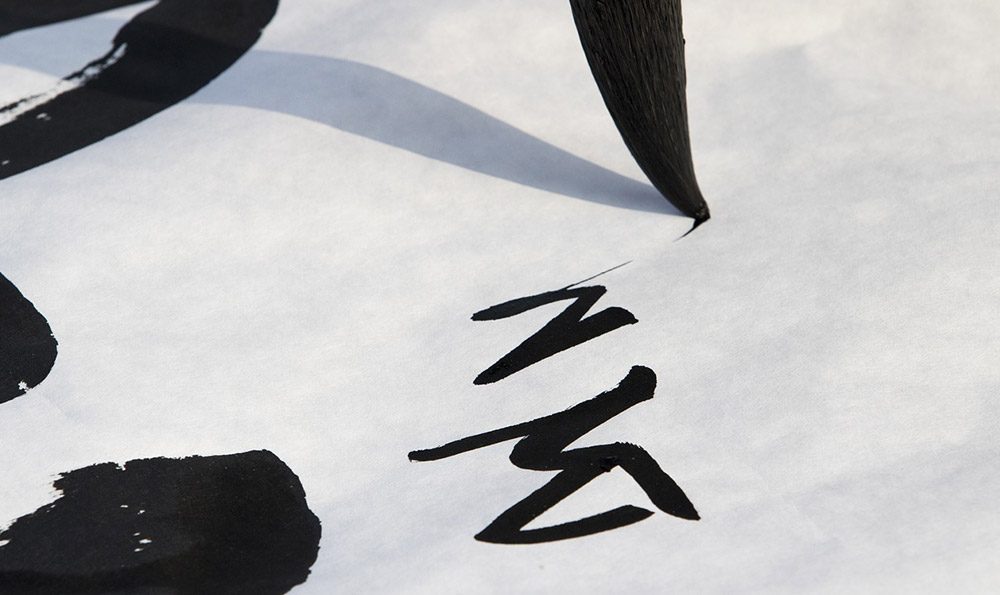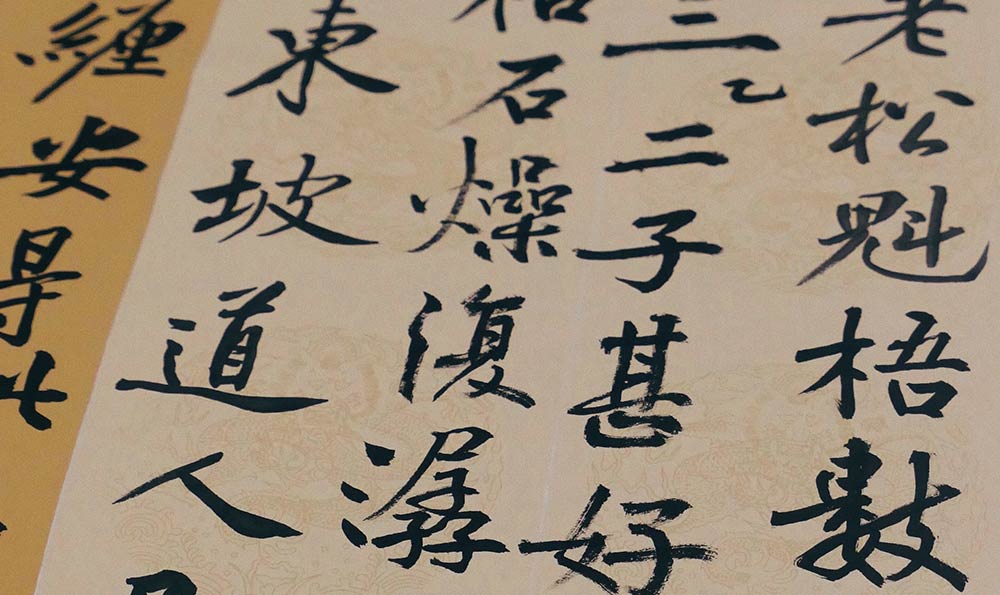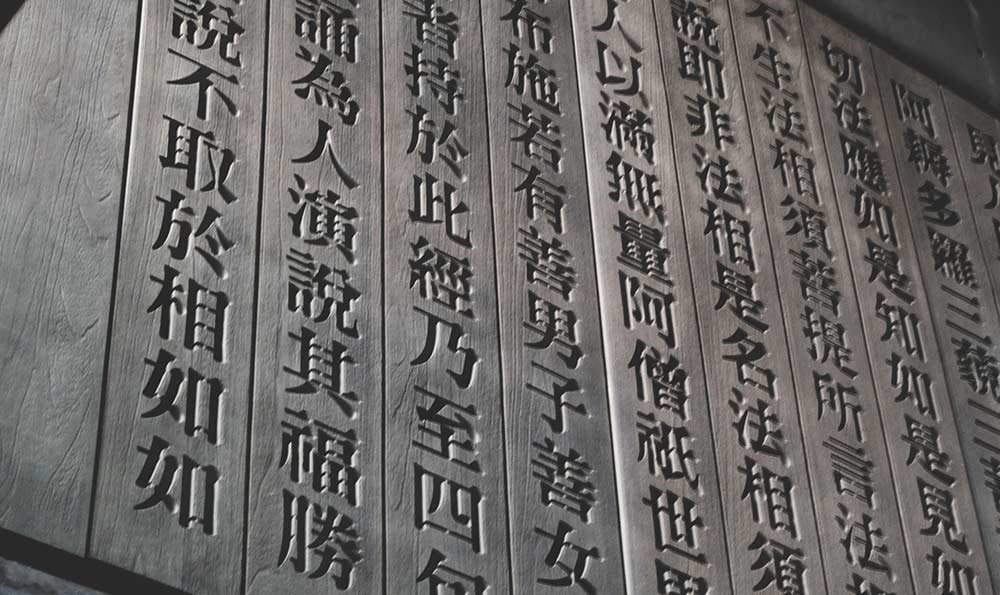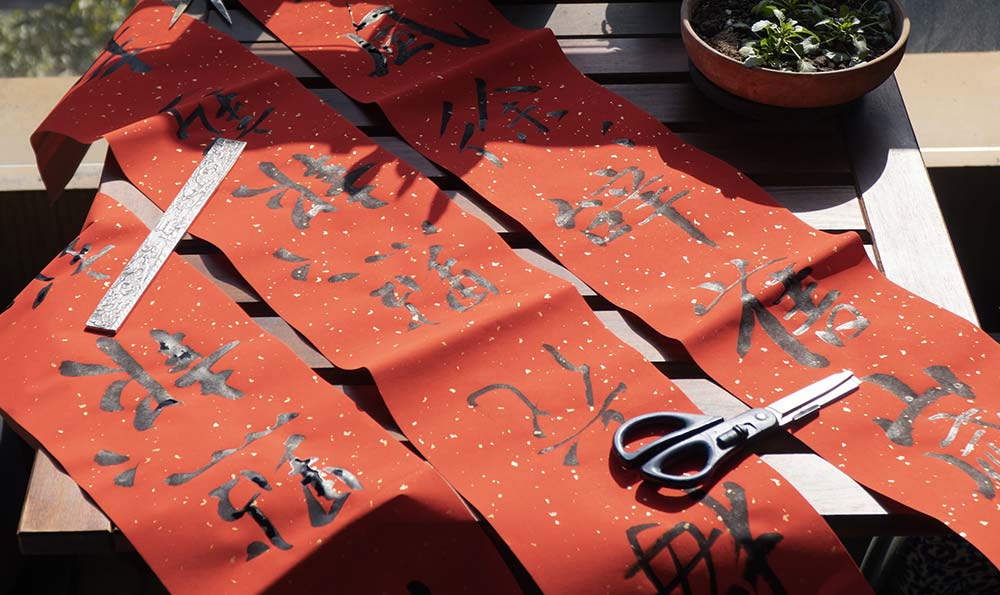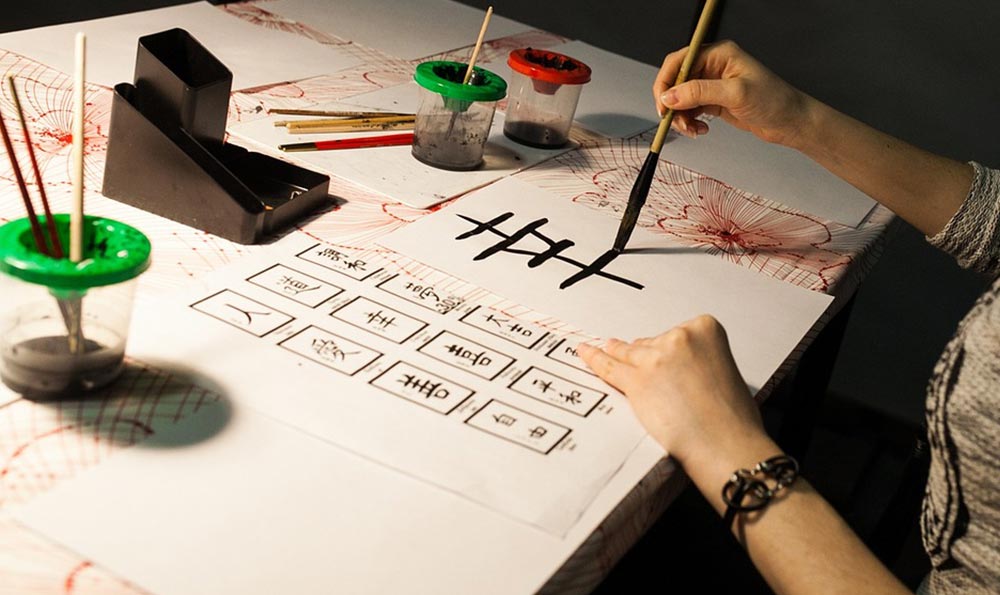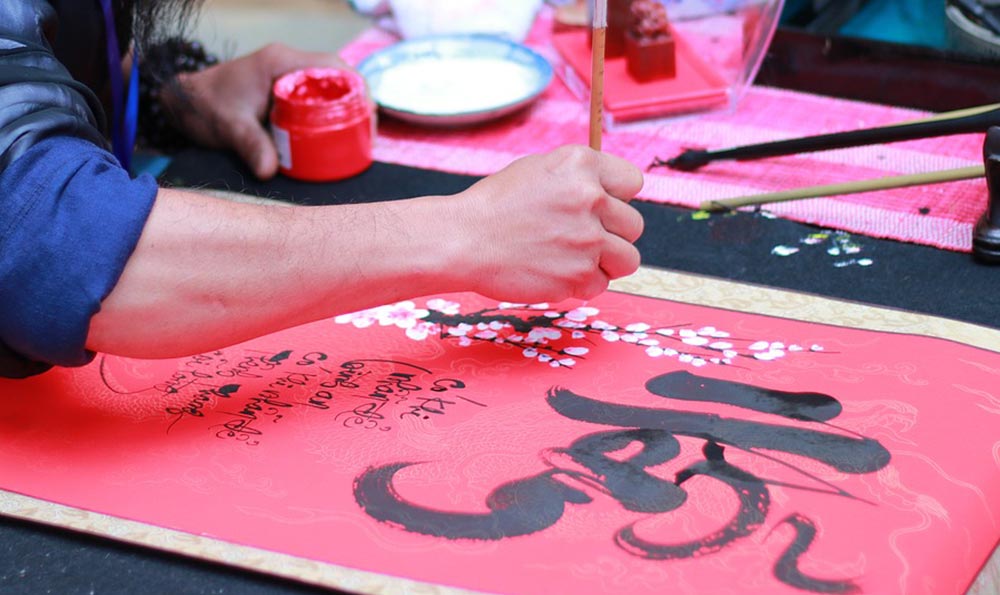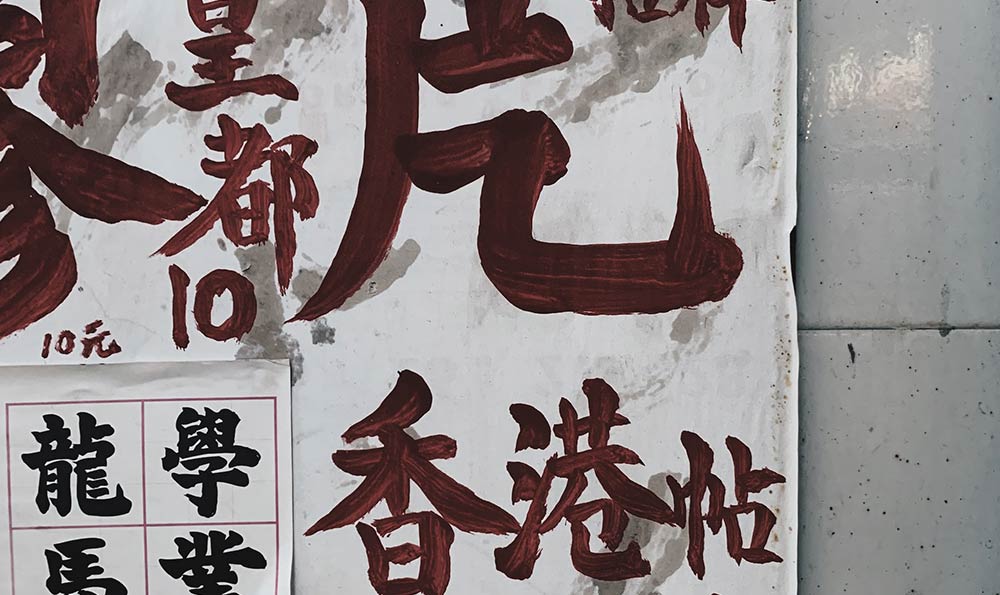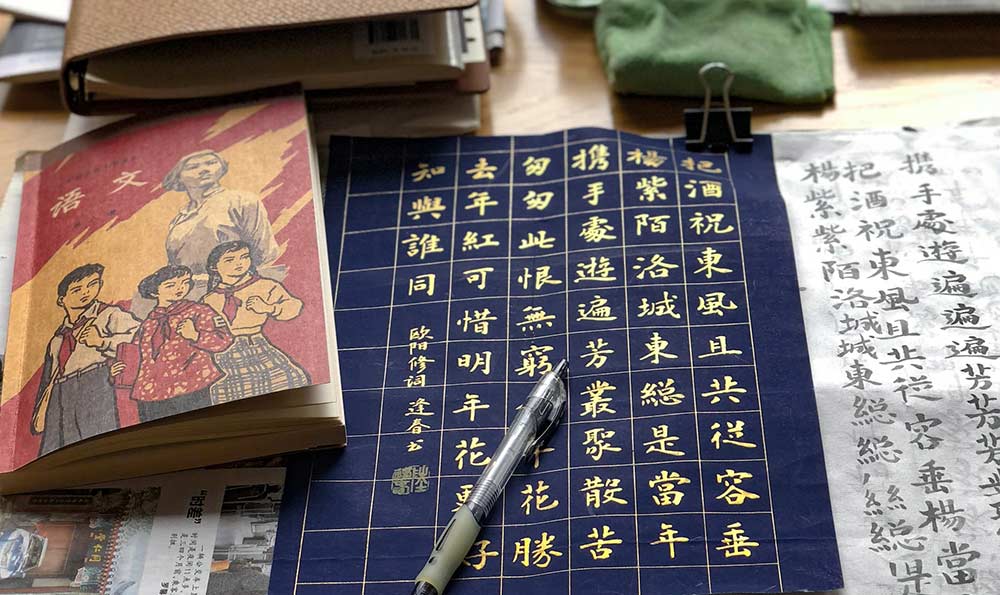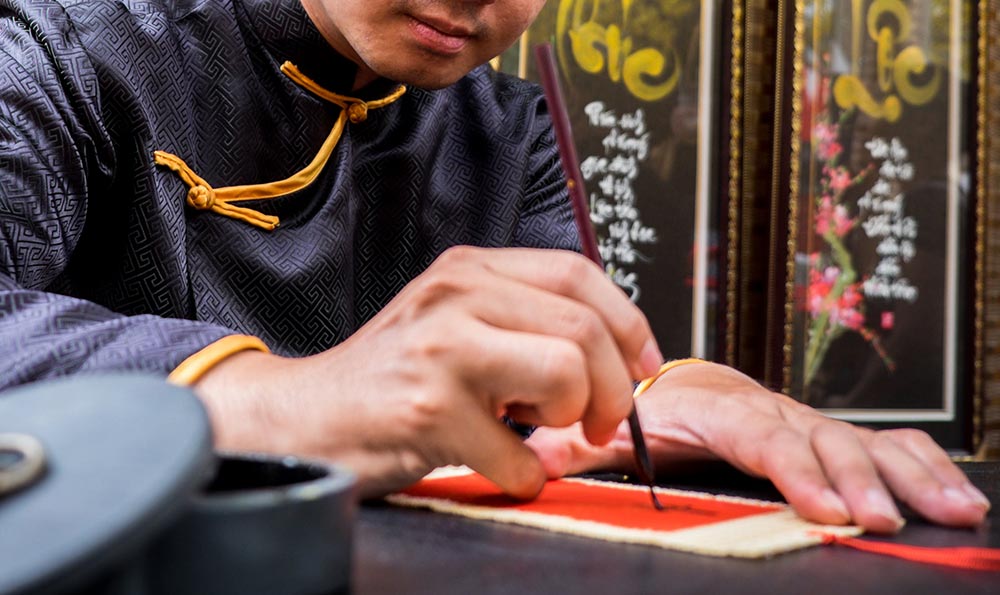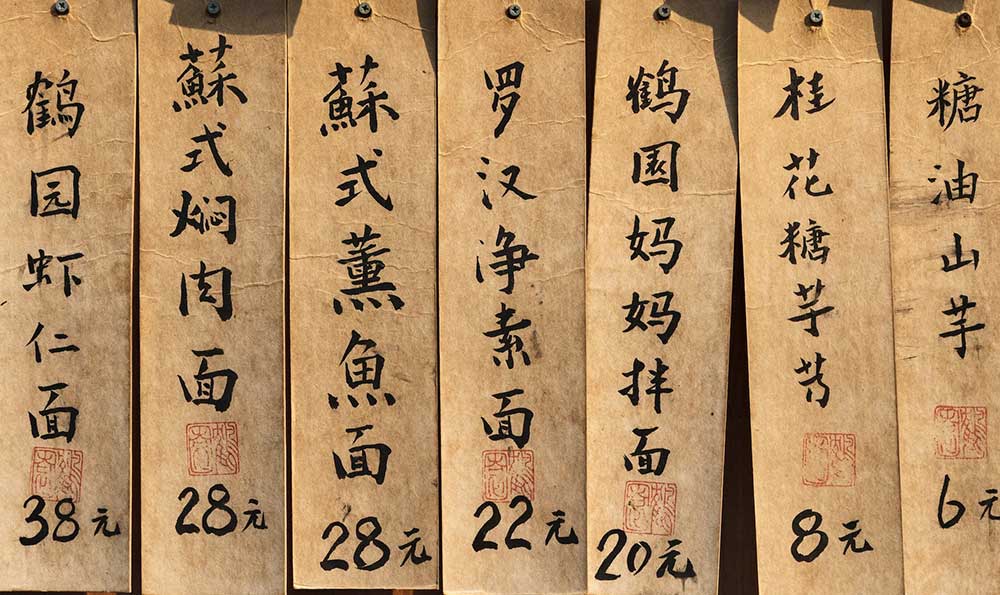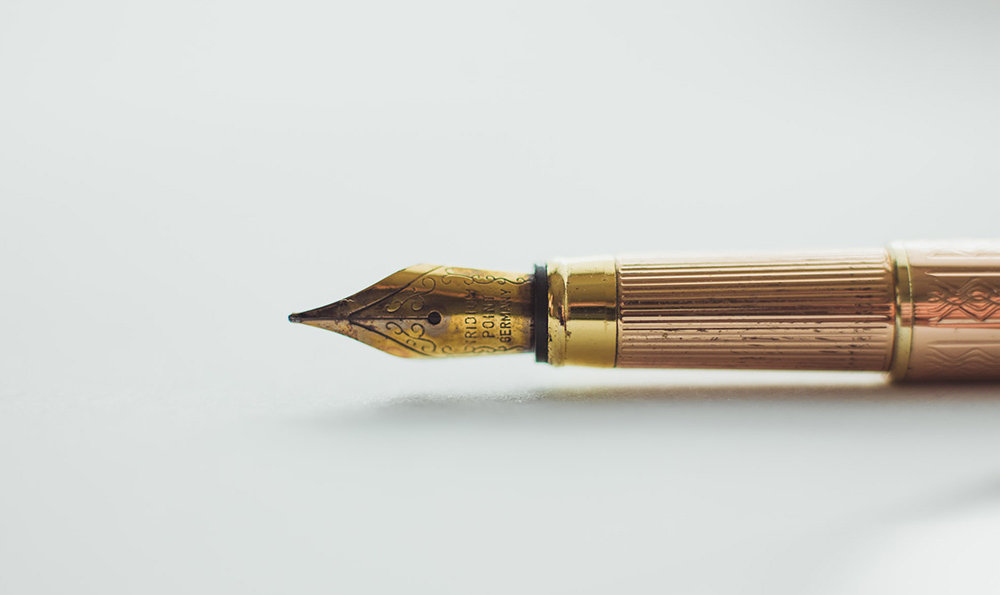
汇钢笔书法楷书是一种以钢笔书写的楷书字形,具有独特的韵律美和书写效果。本文将从定义、分类、举例和比较四个方面,系统地介绍汇钢笔书法楷书的相关知识,探讨其在书法艺术中的地位和作用。
一、定义
汇钢笔书法楷书是一种使用钢笔书写的楷书字体。相比于传统的毛笔书法,汇钢笔书法楷书有着更加规范、细致的字形,线条流畅、笔画有力。其特点是字迹工整,字形端正,给人以秀美、舒展的视觉感受。
二、分类
根据字体特征,汇钢笔书法楷书可以分为多个类别。常见的有朴实稳重的正楷、书写流畅的行书楷体等。每一种类别都有其独特之处,形成了多样的汇钢笔书法楷书风格。
三、举例
举例来说明汇钢笔书法楷书的魅力和效果。一位书法家运用汇钢笔书法楷书技法,写下了一幅“九曜同出宏图显”的作品,其字迹流畅有力,线条优美匀称,充分展示了汇钢笔书法楷书的独特韵味。
四、比较
将汇钢笔书法楷书与传统毛笔书法相比较,可以发现它们各自的特点和优缺点。毛笔书法注重气韵生动,强调墨意的表达和纸张质感的呈现;而汇钢笔书法楷书则注重笔画的规整、线条的流畅,追求字形的准确和整齐。两者各有千秋,在书法艺术中各自有着重要的地位。
汇钢笔书法楷书以其独特的字形和书写效果,成为书法艺术中的一种重要表现形式。通过定义、分类、举例和比较的方式,我们对汇钢笔书法楷书有了更深入的了解,也能欣赏到其独特的艺术魅力。相信汇钢笔书法楷书将继续创新,在书法艺术中发挥着重要的作用。
钢笔字行楷字帖

钢笔字行楷字帖是一种用于练习书写行楷字的工具,通过模仿字帖上的字迹,帮助书法爱好者提升字体书写的准确性和美感。本文将介绍钢笔字行楷字帖的定义、分类、举例和比较等相关知识。
一、定义
钢笔字行楷字帖是由行楷字书法专家编写的一本字帖,用于指导和辅助学习者练习书写行楷字。它以标准的行楷字为范本,提供了横竖撇捺、起笔落笔等书写规范,并通过反复操练来增强书写技巧。
二、分类
钢笔字行楷字帖可以根据不同的难度和字体特点进行分类。按照难度,可以分为初级、中级和高级字帖;按照字体特点,可以分为楷书、行书、草书等不同字体的字帖。每种字帖都有其独特的特点和适用对象,学习者可以根据自身水平和需求进行选择。
举例:
以《欧体行楷字帖》为例,该字帖是一本初级行楷字帖,适合初学者练习。字帖中的字体端庄工整,结构规范,清晰易懂。每个字都有对应的笔画示意和书写要领,使学习者能够准确把握书写规范,逐渐提高书写技巧。
比较:
相比于传统的毛笔字帖,钢笔字行楷字帖具有以下几点优势:
1. 钢笔字行楷字帖的字体清晰,线条流畅,便于学习者观察和模仿。
2. 钢笔字行楷字帖的字迹干净整洁,避免了毛笔字帖的颤抖和晕墨现象。
3. 钢笔字行楷字帖不受季节和环境的限制,可以随时随地使用,方便实用。
钢笔字行楷字帖作为书法学习的工具,对于提高书写技巧和美感具有重要作用。通过钢笔字行楷字帖的练习,学习者可以不断提升书写水平,并且培养出独特而美丽的书写风格。选择适合自己的钢笔字行楷字帖,并坚持练习,将会获得更好的书法成果。
钢笔字楷书练字
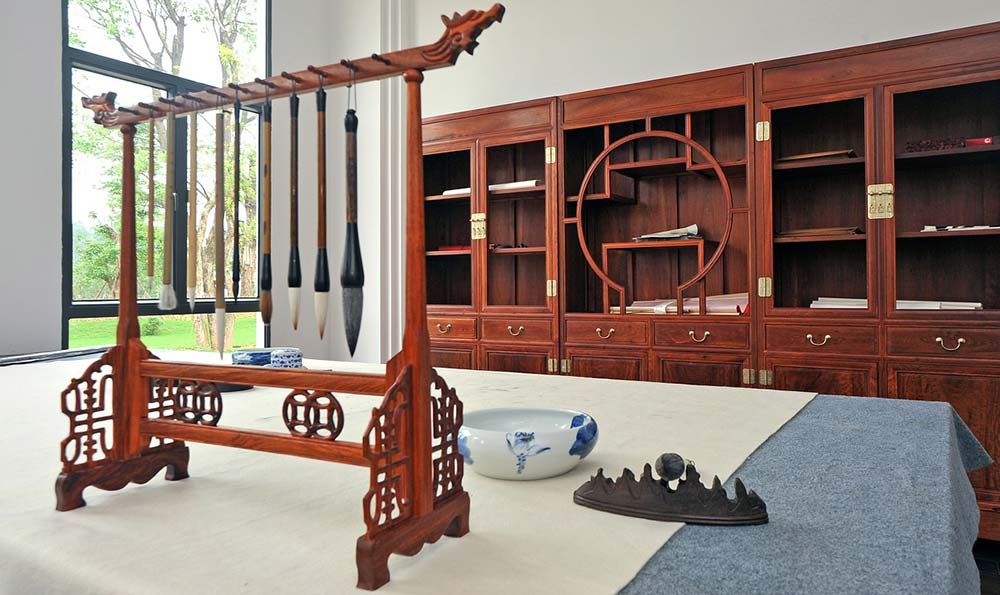
钢笔字楷书练字是指使用钢笔书写楷书风格的练习活动。它具有许多独特的特点和技巧,可以帮助人们提高字迹的美观度和书写的规范性。钢笔字楷书练字在中小学教育、书法培训等领域都有着广泛的应用。本文将从定义、分类、举例和比较等方面阐述钢笔字楷书练字的相关知识。
正文:
一、定义
钢笔字楷书练字是指用特制的钢笔来书写楷书风格的练习活动。钢笔字楷书练字通常要求书写者遵循规定的笔画结构和笔画顺序,力求追求字迹的美感和规范性。这种练字方式与其他练字方式相比,更加注重笔画的精细和线条的流畅。
二、分类
钢笔字楷书练字可以根据使用的钢笔不同进行分类。常见的钢笔字楷书练字包括毛笔字楷书练字、钢笔字楷书练字和宣纸钢笔字楷书练字等。毛笔字楷书练字是在毛笔字练习的基础上,使用钢笔来书写楷书风格的练习;钢笔字楷书练字则是专门使用钢笔进行楷书练习;宣纸钢笔字楷书练字是将楷书练习与宣纸相结合,以提高写字的质感和效果。
三、举例
钢笔字楷书练字的具体操作方法可以通过实际的例子来解释。在练习钢笔字楷书时,可以选择合适的钢笔,调整好字迹的浓淡程度和水墨的颜色深浅。根据预设的字形和字体,顺序书写每个字的笔画,力求每个笔画之间的衔接流畅,线条的粗细适中。通过不断地练习和修正,逐渐提高字迹的规范性和美观度。
四、比较
钢笔字楷书练字与其他练字方式相比,具有一些独特的优势。钢笔字楷书练字具有较好的控制性,可以更加精确地表达每个笔画的宽度和长度。钢笔字楷书练字可以通过调整笔尖的角度和斜度,灵活地变换字迹的粗细和线条的形状。与毛笔字楷书练字相比,钢笔字楷书练字更加方便,无需频繁地蘸墨,书写过程更加连贯和稳定。
通过对钢笔字楷书练字的定义、分类、举例和比较,我们可以看出钢笔字楷书练字具有许多独特的特点和优势。它不仅可以帮助人们提高字迹的美观度和规范性,还可以增强书写的艺术性和表达力。在中小学教育和书法培训中,钢笔字楷书练字具有重要的价值和意义。
参考译文:
The Practice of Pen Calligraphy
Introduction:
Pen calligraphy refers to the practice of writing in the Kai Shu style using a special pen. It has many unique features and techniques that can help improve the aesthetics and standardization of handwriting. Pen calligraphy is widely used in primary and secondary education, as well as calligraphy training. This article will discuss pen calligraphy in terms of definition, classification, examples, and comparisons.
Body:
1. Definition:
Pen calligraphy is the practice of writing in the Kai Shu style using a specialized pen. It requires writers to follow prescribed stroke structures and stroke orders, striving for both aesthetic appeal and standardization. Compared to other forms of calligraphy, pen calligraphy places greater emphasis on precise strokes and fluid lines.
2. Classification:
Pen calligraphy can be classified based on the type of pen used. Common forms of pen calligraphy include brush pen calligraphy, fountain pen calligraphy, and dip pen calligraphy on rice paper. Brush pen calligraphy involves using a fountain pen to write in the Kai Shu style, while dip pen calligraphy exclusively uses a dip pen. Dip pen calligraphy on rice paper combines the Kai Shu style with the texture of rice paper to enhance the quality and effects of handwriting.
3. Examples:
The specific techniques of pen calligraphy can be illustrated through practical examples. For instance, when practicing pen calligraphy, one should choose a suitable pen and adjust the ink intensity and color. Following predetermined character forms and styles, each stroke of every character should be written in a continuous and fluid manner, with a suitable thickness and line shape. Through continuous practice and refinement, the standardization and aesthetics of handwriting can be gradually improved.
4. Comparison:
Pen calligraphy has several unique advantages compared to other forms of calligraphy. Firstly, it offers better control, allowing for more precise expression of stroke width and length. Secondly, pen calligraphy provides flexibility in modifying the thickness and shape of strokes by adjusting the angle and slant of the pen nib. Additionally, compared to brush pen calligraphy, pen calligraphy is more convenient, as there is no need for frequent ink dipping, resulting in smoother and more stable writing.
Conclusion:
Through the discussion of the definition, classification, examples, and comparisons of pen calligraphy, we can see that it possesses unique characteristics and advantages. Pen calligraphy not only improves the aesthetics and standardization of handwriting but also enhances the artistry and expressiveness of writing. Therefore, pen calligraphy holds significant value and importance in primary and secondary education, as well as calligraphy training.


